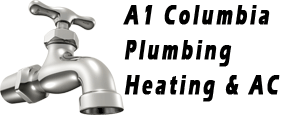Have you ever hired a local plumbing professional and then not understood what in the hell they were talking about when they got to your home? Hopefully not, but if so, here’s a few important plumbing terms to help you understand:
Thread paste. Aka “pipe dope” – thread paste is easily the most widely-used product in a plumber’s toolbox. The primary function of thread paste/pipe dope is to seal threaded connections by filling in the tiny voids with an epoxy type material. Applying the paste will also act as a lubricant and help to tighten the connection a little better once the two joints come together. There’s a ton of different pastes on the market, and some contain really harsh chemicals. Good plumbers will understand which is good and which is bad, especially in concern to the material you are using it on. Some pastes should not be used on plastic threads for example. There are a few other situations that plumbers like to apply the paste, such as on the mating surfaces of certain kinds of unions, inside compression fittings, inside flared connections, or on the bottom of certain types of gaskets. Overall, this stuff gets used alot (so don’t worry if your plumber is talking about “using dope” in your bathroom!)
Plumber’s putty – this is probably the most widely “misused” plumbing accessory known to modern man. Honestly, I can’t even count the times that I’ve come across putty being used in place of paste or tape or something, and that is always a sure fire leak. Putty should only be used on the underside of something that will be tightened or compressed down, such as the underside of sink drains, shower drains, and bathtub drains. Novice plumbers will use it underneath stainless steel sinks to seal them to the countertop as well, but this can lead to serious problems. Back in the day, it was used to seal old toilets to the toilet flange. (Not recommended, by the way).
PTFE or (polytetraflouroethylene) tape aka thread tape – this is commonly (and mistakenly) called Teflon tape. There’s nothing teflon about it. Teflon is a trademarked brand of the DuPont corporation. This is used on threaded connections, and thread tape can be used in place of, or along with, pipe dope. It’s a matter of preference in the professional community, although time to seal is one reason I use it in newer homes. I don’t really have a preference either way for older homes. If it is a connection that I most definitely do not want to have to fix, I will usually use both. There are also certain devices that will call for tape specifically because it can be harmful if paste is introduced into them when the water is turned on – or if for some reason, people are too cheap to fix dissimilar metals and want to just jimmy it for now. Sure, I’ll tape it, so you can bust it off easier once it’s rusted and screwed for good. A good plumber will never over-wrap the threads with the tape, this can result in putting too much stress on the female fitting and cracking it permanently.
Flux – this is what you put on copper or brass pipe before it’s soldered. It cleans the pipe and allows the soldering to flow directly into the fitting. If you are working with this, chances are you are in the middle of a larger job. Just fyi. This makes the future plumbing work easier.
Caulk – Latex caulk and silicone caulk are both used frequently. Caulks and silicones should never be used to seal any piping though. They should only be used to seal fixtures, or to seal around areas that should not allow water into them. Examples include tubs, sinks any outside penetrations and maybe even faucets. Some sneaky plumbers like to use silicone on the underside of sink, shower and bathtub drains in lieu of plumber’s putty. Not this guy. It’s so, so messy and removing it requires super-human strength!
Plumbers grease – I know a few guys who are about as greasy as they come. All jokes aside, this is used any time a faucet gets taken apart. This includes O-rings, threads and any moving parts. Taking it down? Grease it up!
As usual, if you have a plumbing emergency, please don’t hesitate to call us anytime 24/7! Oh, and if you’ve ever wanted more “power” from your toilet, check here:
http://youtu.be/D5PmjVLVK_4#aid=P-B_xC6quzQ
